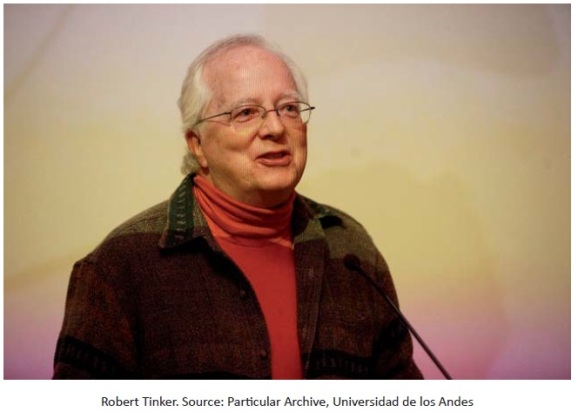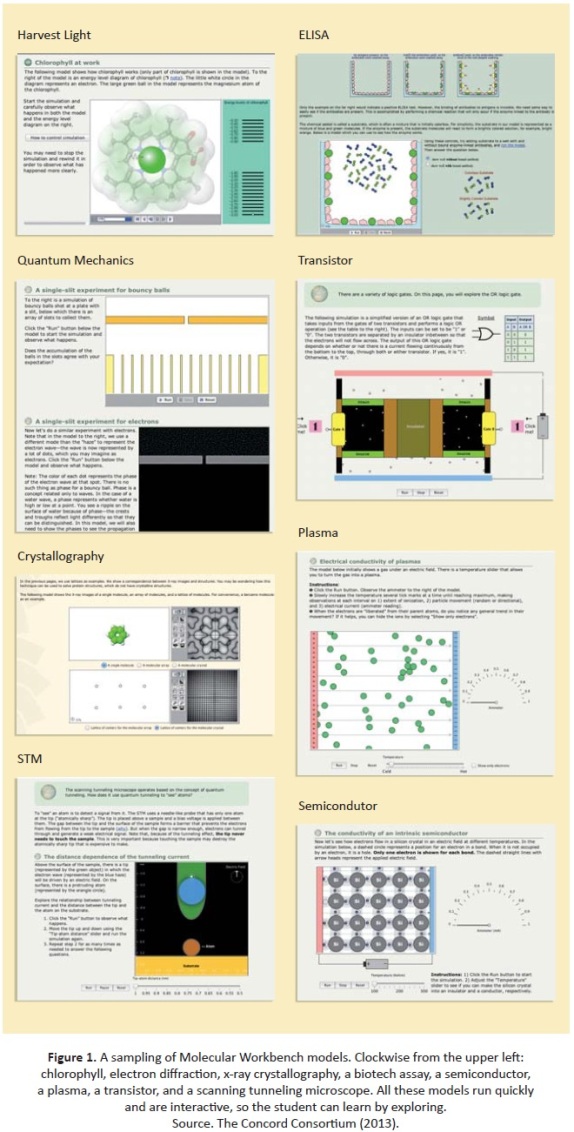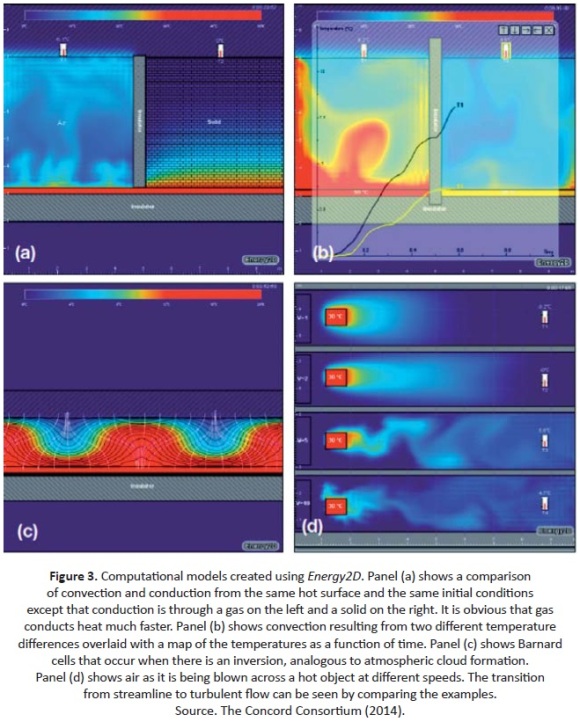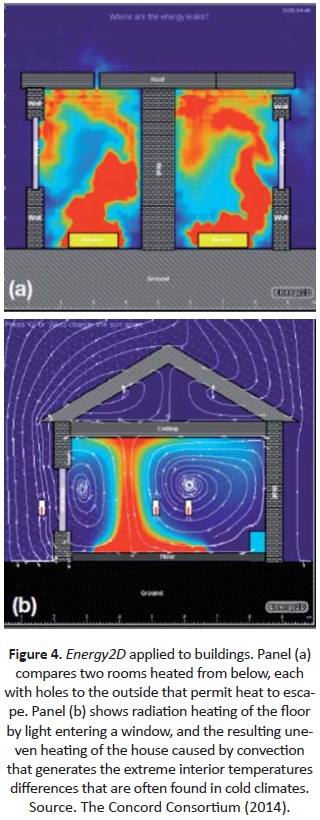Servicios Personalizados
Revista
Articulo
Indicadores
-
 Citado por SciELO
Citado por SciELO -
 Accesos
Accesos
Links relacionados
-
 Citado por Google
Citado por Google -
 Similares en
SciELO
Similares en
SciELO -
 Similares en Google
Similares en Google
Compartir
Revista de Ingeniería
versión impresa ISSN 0121-4993
rev.ing. no.39 Bogotá jun./dic. 2013
Deeply Digital: Teaching and Learning1, 2
Enseñanza y aprendizaje profundamente digitales
Robert Tinker(1)
(1) Ph.D in Physics, Massachusetts Institute of Technology (MIT). Founder of The Concord Consortium, Concord MA - United States and the Virtual High School, Maynard, MA- United States. rtinker@concord.org
Received November 13th, 2013. Modified January 26th, 2014. Approved January 27th, 2014.
Key words
Educational technology, deeply digital,formative feedback, constructivism.
Abstract
The incredible educational promise of information and communication technologies is too often wasted on trivial applications such as electronic texts and video lectures. To help distinguish between trivial and optimal applications of technology, educators have started using the term "Deeply Digital. Deeply Digital materials take full advantage of the many ways that information technologies can enhance education. To provide specific examples, two computer assisted drawing (CAD) tools used for analyzing buildings that support learning about heat transfer, design under constraint, and the properties of fluids will be demonstrated. Students learn by using the tool, and teachers can track student learning. The tools log everything that a student does, and the logs can be analyzed to provide detailed information about student thinking and skills development. Deeply digital applications like these have the potential to transform engineering education.
Palabras claves
Tecnología educativa, profundamente digital, retroalimentación formativa, constructivismo.
Resumen
La gran promesa educativa de las tecnologías de educación y comunicaciones está generalmente desperdiciada en aplicaciones triviales como textos electrónicos y video conferencias. Para distinguir entre unas aplicaciones tecnológicas óptimas y otras triviales, un grupo de educadores ha empezado a usar el término "Profundamente digital. Materiales "Profundamente digitales aprovechan las distintas maneras en que las tecnologías de la información pueden mejorar la educación. Para proporcionar unos ejemplos específicos, se demuestran dos herramientas de dibujo asistido por computador (CAD) que fortalecen el aprendizaje acerca de la transferencia de calor, el diseño bajo limitaciones y las propiedades de los fluidos. Estudiantes aprenden utilizando la herramienta y sus profesores pueden monitorear el aprendizaje. Las herramientas registran todas las acciones de los estudiantes y los registros (o logs) pueden ser analizados para proveer información detallada acerca del desarrollo de las habilidades y el pensamiento de cada estudiante. Aplicaciones como estas tienen el potencial de transformar la educación en ingeniería.
THE IMPORTANCE OF LEARNING THROUGH EXPLORATION
Technology has many applications in teaching and learning, and we look forward to a time when technology has transformed education by providing worldwide access to outstand ing, research-based learning opportunities. But as new technologies blossom, sometimes there is a perverse effect leading to a decrease in the quality of the education provided. I see this happen ing in MOOCs, which expand the reach of education, but too often at the expense of quality. Too frequently, mean ingful active engagement of learners is sacrificed when information technologies are introduced. Students need ampie opportunities to learn by DOING - by exploring systems, undertaking design projects, making measurements, analyzing data, and communicating their results. This is a constructivist model of learning that is not yet used in MOOCs, where the emphasis is on reaching a very large number of students. A transmission or instructivist style (Papert, 1993) is easy to implement with tech-nology by using talking heads and multimedia resources to convey knowledge to relatively passive students. This is a step backwards in educational quality. The difference between instructivist and constructivist learning is the difference between learning how to play football by watching football players or getting out and playing football. Science and engineering learning should and can be constructivist, whether delivered through MOOCs or through more traditional means.

DEEPLY DIGITAL LEARNING
The ubiquitous availability of computers, tablets, and the Internet can make it possible to enhance Science, Technology, Engineering and Mathematics (STEM) education in ways not possible before now. But these technologies must enhance learning, not simply present oíd approaches in a new format. Educational research from the last two decades provides clear guidance on how best to use technology to improve learning. The use of the right technologies will make new, comprehensive STEM materials more effective than any previous STEM reform effort. Simply stated, we should make MI use of what is already known about teaching and learning, and technology makes it possible to do this. The required approach has been labelled "deeply digital."
The term, "deeply digital" made its debut in "Prepare and Inspire," a report prepared by a sub-committee of the (U.S.) President's Council of Advisors on Science and Technology - PCAST (2010), approved by the full council and adopted by President Obama. The report concludes, "We believe that computation and information technology is today poised to play a transformative role in education, and that wise investment in technology-based initiatives can yield enormous benefits." (p73) The report recommends a vastly increased, mission driven, effort to créate deeply digital materials that make optimal use of interactive simulations, embedded assessments, and adaptive problem engines.
EXAMPLES OF DEEPLY DIGITAL SOFTWARE
Among existing computer applications, educational computational models are a key ingredient of deeply digital materials; specifically, models that use algorithms based on physical laws. These models are useful in educational contexts if they are used to genérate realtime visualizations of physical systems rapidly and to place important parameters and initial conditions under student control. This allows students to learn quickly by watching the model evolve as they explore its performance under different conditions. Exploring a computational model is very much like performing a handson experiment or solving a design problem.
One example of an educational computational model is the Molecular Workbench developed at the Concord Consortium. We will describe this at length at a workshop tomorrow and our talk the next day, and so mention it here only briefly. Molecular Workbench has at its core an engine that computes the motion of atoms based on good approximations of the major electromagnetic and quantum forces acting on atoms and molecules. The engine is embedded in an authoring system that has allowed educators to make hundreds of models of atomic-scale phenomena. Some of the most popular involve models of changes of state, simple chemical reactions, and diffusion. But, as Figure 1 indicates, a huge number of highly specialized educational models have also been generated using this software.

Energy3D provides an example of computational models applied to engineering education. Energy3D is a simplified computer assisted drawing (CAD) and manufacturing (CAM) system. Unlike CAD/CAM software developed for professional use, Energy3D is easy to use and intuitive, so that students can begin using it with little or no instruction. Because it is simplified, it does not have all the features of professional software, but those it does have been selected for educational reasons. However, unlike most CAD/CAM systems,it can analyze the performance of build-ings that have been created using it. With this software, students can design buildings, print out parts, assemble them into 3D models, créate villages, and then use the software to genérate heat maps of the surroundings by simulating the energy input from sunlight over a day and a year (see Figure 2 ). This combina-tion of computer design, handson construction, and thermal analysis creates a powerful learning environment for beginning engineering students.
Figure 2.Energy3D illustrating (left) a village that students constructed from software printouts, (center) a visualizaron used in thermal analysis of student designs, and (right) a false-color heat map of buildings and their surroundings that shows how their location influences solar heating. Source. (Xie, C, Zhang, Z., Nourian, S., Pallant, A., & Hazzard, E. 2013; The Concord Consortium, 2011-2014).Energy2D, also developed at the Concord Consortium, is used to explore design problems that involve heat flow. It uses an accurate computational model of conduction, convection, and radiation, the three ways heat can be exchanged. The computations are so-phisticated and accurate, based on the Navier-Stokes equation, which governs flow; the heat equation, which governs how heat is transmitted from one place to another; the ideal gas equation, which introduces buoyancy; and ray tracing, which supports insolation. The engine generates evolving visual-izations of the system numerically with arbitrary boundary conditions. Like the Molecular Workbench, Energy2D in-cludes model-building tools, so it can be used to model many different situa-tions that involve heat flow and buoyancy, as illustrated in Figures 3 and 4 .


These software packages support open-ended, constructivist learning because they are all highly interactive and graphic. For instance, in Energy2D students can easily change the location, thickness, and thermal properties of the walls, add and remove heat sources, move the sun, and place tem-perature sensors anywhere. The models genérate dynamic visualizations, so by running them the student can see the flow of energy in real time and genérate time-series graphs of the temperature detected by any sensor they choose. They also execute quickly, which is key to maintaining student interest and making it possible to undertake many experiments and design modifications in a short time.
These three software packages share another important property-they can rightly be called "meta-models" because they result in hundreds of specific models. While it has required considerable effort to créate these sophisticated programs, it would have taken far more resources to créate individually each of the hundreds of models derived from the meta-models.
IMPROVING PROJECT-BASED LEARNING WITH STEALTH ASSESSMENT
One of the impediments to using open-ended, constructivist challenges in science and engineering is the difficulty of assessing student performance. As students go about exploring any of these environments in a classroom or a lab, it is often difficult to determine whether they are deeply engaged and learning, or completely at sea and failing to learn anything. To the casual observer, students who are following a plan and making progress can be indistinguishable from students who are paying little attention to the task at hand and wasting time.
When students are using computational models, it is possible to monitor their progress by using the computer to analyze their actions. The software can log everything students are doing and save everything that they have created, such as designs, graphs, and data. With appropriate software, these logs can be summarized and displayed to provide clues to student thinking. Link-ing educational computational models with educational analytics or "stealth-assessment" is a promising area of current research.
A simple example of stealth assessment based on student logs comes from our research on students who were asked to use Energy3D to design a group of building, within certain given constraints. Students were given a set of buildings and challenged to add some more buildings in such a way as to minimize shadowing of other buildings and maximize open space. Figure 5 is a visualization of the number of actions two students performed. It is clear from a glance that the upper student was more engaged. Figure 6 illustrates a more detailed analysis of several students that categorized their actions into build-ing and revising. It is clear that there are huge differences in the ratios of the number of events in these two categories. These data revealed that some students simply enjoyed creating build-ings and paid scant attention to the constraints, while others made more revisions to their designs in order to optimize them within the given constraints.
Figure 5. A simple analysis of log data that shows a huge difference in the level of activity for two different students.The combination of stealth assessment and computational models provides fine-grained detail about student progress, but does not subtract from class time by requiring quizzes and tests. Software incorporating this combination is, unfortunately, not yet avail-able for large-scale implementation. Because it solves one of the practical problems of constructivist education by giving detailed assessment data, it is, however, likely to become widespread in the near future. Since it is completely computer-based, it can be employed at a distance and has allowed us to un-dertake classroom research anywhere there are willing teachers. Naturally, it could be used with online courses and MOOCs.
Figure 6. Analysis of student logs. By comparing the ratio of building to revisión, we see that, in this small sample, females revised more frequently. Their final designs met the design goals more often, most likely because of their cut-and-try approach.SUMMARY
Computational models are an essential component of deeply digital educational materials that can have a major po-sitive impact on science and enginee-ring education because they support constructivist learning. Meta-models, such as those illustrated in this paper, are important because they can be used to créate hundreds of different, valuable educational, computational models. One of the persistent problems of constructivist learning is the difficulty of evaluating the quality of student work. Stealth assessment using logs generated by these models can give faculty on-going information about student thinking with unprecedented accuracy. Since both these models and assessments are computer-based, they can be used in all educational settings. This combination of model-based learning and stealth assessment is an área of current research that holds great promise as key parts of deeply digital materials that will transform STEM teaching and learning.
ACKNOWLEDGEMENTS
Let me express thanks to the developer of the work that I am going to be showing you today. All the software described in this talk was developed by a brilliant developer, programmer and researcher named Charles Xie of the Concord Consortium. It is free, open source and can be downloaded from http://concord.org. I particularly want to thank the National Science Foun-dation; the work that I am describing is based on years of generous funding from them.
1 This paper is based upon research supported by the National Science Foundation under Grant No. DRL-0918449. Any opinions,findings, and conclusions or recommendations expressed in this material are those of the author and do not necessarily reflect the views of the National Science Foundation.
2 This article is based on the lecture of Robert Tirrker presented in the forum "Strengthening Engineering Education with new Information and Comunication Technologies" which was held at Universidad de los Andes on November 13th, 2013.
REFERENCES
President's Council of Advisors on Science and Technology (US). (2010). Prepare and Inspire: K-12 Education in Science, Technology, Engineering, and Math (STEM) for America's Future: Executive Report. Executive Office of the President, President's Council of Advisors on Science and Technology. [ Links ]
Papert, S. (1993). The children's machine: Rethinking school in the age of the computer. New York: Basic Books. [ Links ]
The Concord Consortium (2011-2014). [Image] Retrieved from http://ener-gy.concord.org/energy3d/ [ Links ]
The Concord Consortium (2014). Tea-ching and Learning Heat Transfer with Energy2D. [Image]. Retrie-ved from http://concord.org/pu-blications/newsletter/2010-spring/energy2d# [ Links ]
Xie, C., Zhang, Z., Nourian, S., Pallant, A., & Hazzard, E. (2013). A Time Series Analysis Method for Asses-sing Engi-neering Design Processes Using a CAD Tool. Retrieved from: http://concord.org/sites/default/fi-les/pdf/eerg-narst-2013.pdf [ Links ]
The Concord Consortium (2013). Molecular Workbench [Image] Retrie-ved from http://mw.concord.org/modeler/ [ Links ]













